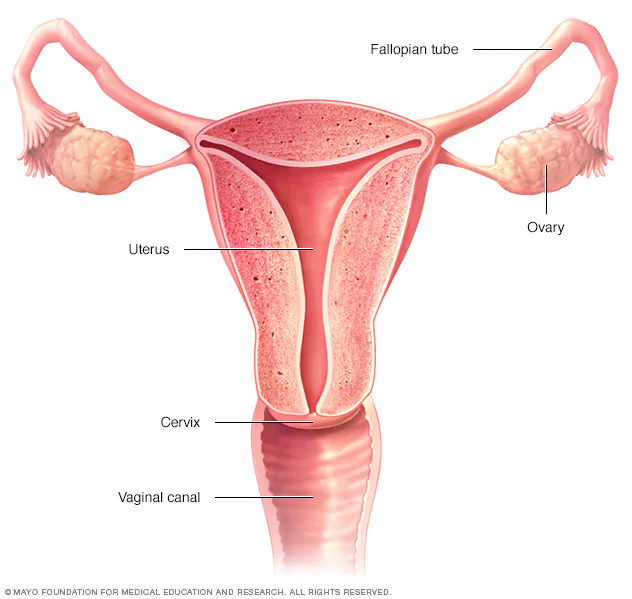Amenorrhea is the absence or cessation of menstrual periods in a woman of reproductive age. It can be classified into two types: primary and secondary. Primary amenorrhea refers to a woman who has never had a period, while secondary amenorrhea refers to a woman who previously had a period but has stopped.
Causes of Amenorrhea
There are several potential causes of amenorrhea, including pregnancy, menopause, hormonal imbalances, medical conditions, and lifestyle factors.
A. Pregnancy – One of the most common causes of amenorrhea is pregnancy. A pregnancy can cause the cessation of menstrual periods as the body focuses on supporting the growing fetus.
B. Menopause – As women age, they may experience a natural decline in estrogen levels, leading to the cessation of menstrual periods. This is known as menopause and is a normal part of aging for women.
C. Hormonal imbalances – Amenorrhea can also be caused by imbalances in hormones such as thyroid hormones, follicle-stimulating hormone (FSH), and luteinizing hormone (LH). These imbalances can disrupt the delicate balance of hormones in the body and cause amenorrhea.
D. Medical conditions – Certain medical conditions, such as polycystic ovary syndrome (PCOS), thyroid disorders, and pituitary gland disorders, can cause amenorrhea. These conditions can affect the production and regulation of hormones in the body, leading to the cessation of menstrual periods.
E. Lifestyle factors – Excessive exercise, stress, and rapid weight loss can also disrupt the delicate balance of hormones in the body and cause amenorrhea. Women who engage in intense physical activity, experience high levels of stress, or lose weight quickly may experience amenorrhea as a result.
Symptoms of Amenorrhea
A. Absence of Menstrual Periods for Three or More Consecutive Cycles
The most obvious symptom of amenorrhea is the absence of menstrual periods for three or more consecutive cycles. This is a clear indication that something is wrong with the reproductive system and requires medical evaluation.
B. Infertility
Amenorrhea can also lead to infertility, as a woman’s menstrual cycle is crucial for pregnancy to occur. If periods stop or become irregular, it can be difficult for a woman to become pregnant.
C. Hot Flashes
Hot flashes are another common symptom of amenorrhea, especially in women who are experiencing menopause. These flashes can be accompanied by sweating and can last anywhere from a few seconds to several minutes.
D. Night Sweats
Night sweats can also occur in women with amenorrhea, especially during menopause. These sweats can result in discomfort and disrupted sleep, leading to fatigue and other related issues.
E. Vaginal Dryness
Vaginal dryness is another common symptom of amenorrhea, particularly in women who are experiencing menopause. This dryness can lead to discomfort and pain during sexual intercourse.
F. Mood Swings
Mood swings can also be a symptom of amenorrhea, as hormonal imbalances can lead to fluctuations in mood. Women may feel irritable, anxious, or depressed during this time.
G. Decreased Libido
A decrease in libido is also a common symptom of amenorrhea, as hormonal imbalances can affect sexual desire. Women may experience a lack of interest in sex or find it difficult to become aroused.
3. Diagnosis
Physical Examination – The first step in diagnosing amenorrhea is a physical examination. This includes a pelvic exam to check for any structural abnormalities, as well as a breast exam to check for any lumps or other abnormalities.
Blood Tests – Blood tests are also used to diagnose amenorrhea. These tests can check hormone levels, such as follicle-stimulating hormone (FSH) and luteinizing hormone (LH), to determine if there is a hormonal imbalance.
Imaging Tests – Imaging tests, such as ultrasound or MRI, can also be used to diagnose amenorrhea. These tests can help to determine if there are any structural abnormalities in the reproductive system, such as a uterine fibroid or polyp.
4. Treatment
Dependent on Underlying Cause – The treatment for amenorrhea will depend on the underlying cause. If the cause is pregnancy, treatment is not necessary. If the cause is menopause, treatment may include hormone replacement therapy. If the cause is a hormonal imbalance, treatment may include medications to regulate hormones. If the cause is a medical condition, such as a thyroid disorder, treatment will depend on the specific condition.
Medication – Medications can be used to treat amenorrhea, depending on the underlying cause. Hormone replacement therapy can be used to regulate hormones in women who are experiencing menopause. Other medications, such as birth control pills, can be used to regulate the menstrual cycle.
Lifestyle Changes – Lifestyle changes can also be used to treat amenorrhea. This may include changes in diet and exercise, as well as reducing stress levels. Women may also be advised to avoid certain medications, such as anti-depressants, which can affect the menstrual cycle.
Surgery (in Some Cases) – In some cases, surgery may be necessary to treat amenorrhea. This may include a hysterectomy to remove the uterus, or a procedure to remove
Conclusion
- Importance of seeking medical evaluation for amenorrhea
- Treatment will depend on underlying cause
It is important to seek medical evaluation if you are experiencing amenorrhea. Your doctor will be able to determine the underlying cause and provide appropriate treatment to regulate menstrual periods and manage any associated symptoms.
